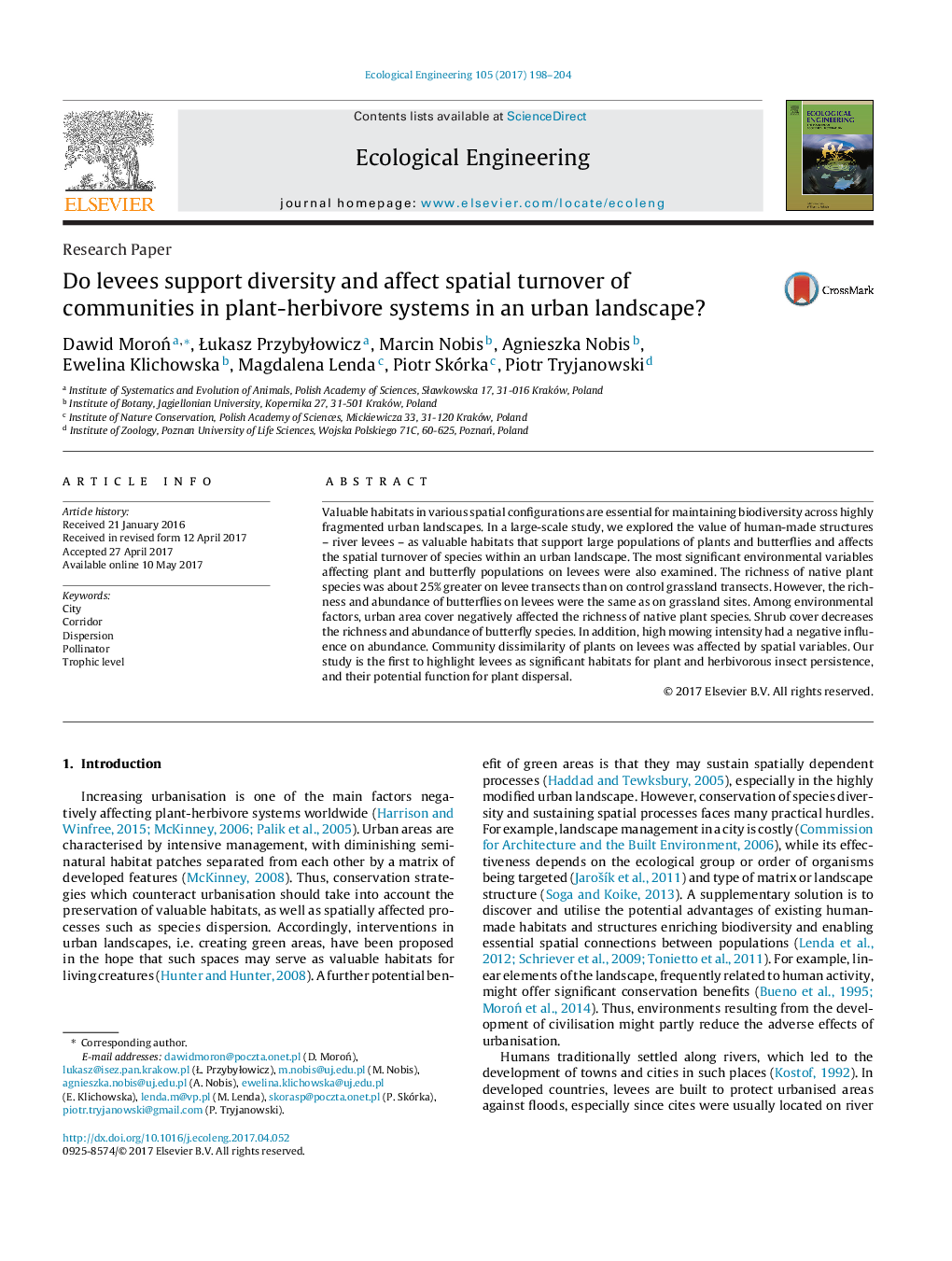| Article ID | Journal | Published Year | Pages | File Type |
|---|---|---|---|---|
| 5743613 | Ecological Engineering | 2017 | 7 Pages |
â¢We explored the value of levees in plant-herbivore systems within an urban landscape.â¢Levees are valuable habitat for plant and butterfly species.â¢Levees support populations' connectivity for plants.â¢Levees management may have an essential role in maintaining biodiversity in cities.
Valuable habitats in various spatial configurations are essential for maintaining biodiversity across highly fragmented urban landscapes. In a large-scale study, we explored the value of human-made structures - river levees - as valuable habitats that support large populations of plants and butterflies and affects the spatial turnover of species within an urban landscape. The most significant environmental variables affecting plant and butterfly populations on levees were also examined. The richness of native plant species was about 25% greater on levee transects than on control grassland transects. However, the richness and abundance of butterflies on levees were the same as on grassland sites. Among environmental factors, urban area cover negatively affected the richness of native plant species. Shrub cover decreases the richness and abundance of butterfly species. In addition, high mowing intensity had a negative influence on abundance. Community dissimilarity of plants on levees was affected by spatial variables. Our study is the first to highlight levees as significant habitats for plant and herbivorous insect persistence, and their potential function for plant dispersal.
Graphical abstractDownload high-res image (382KB)Download full-size image
